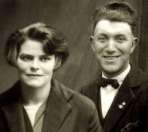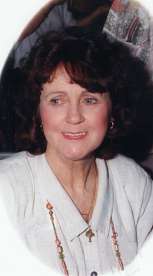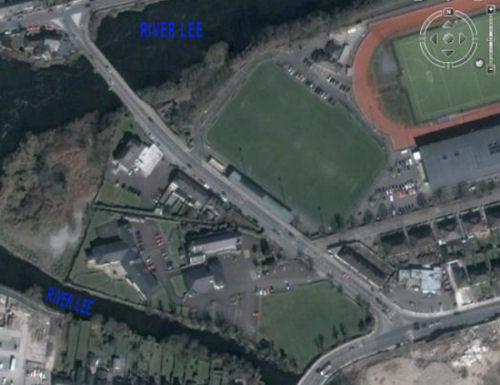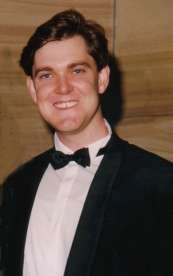Back to Australian Branches ‹--------› Forward to Martin Page 2
|
Patricia Coleman was born to Tom and Margaret Lynch in Marrickville, Sydney on 23 June, 1937. She was baptised Patricia Mary Lynch on 18th July in St. Bridget's Church, Marrickville, by Fr Augustine Fitzsimmons. Patricia attended St Jerome's Primary School, Punchbowl and at Bethlehem College, Ashfield. She also studied singing and piano. |
||
 |
 |
 |
|
Tom & Margaret Lynch 1945 |
Patricia Lynch & Martin Coleman 1959 |
Norah & Pat Coleman 1931 |
|
Martin Coleman was born to Patrick & Norah Coleman in Cahermaculick, Shrule, Co Mayo, Ireland on 18th June, 1937. He attended Gortjordan National School, Co Mayo, and the Sacred Heart College, Western Road, Cork City and the Sacred Heart College in Carrignavar, Co Cork. |
||
 |
 |
 |
 |
|
|
Dominique 1975 |
Patricia 1995 |
Martin 1991 |
Dominique & Martin 1975 |
|
|
Martin Pat 1991 |
Michael 1996 |
Bernadette 2001 |
Kieran 1997 |
|
G6 of our family tree lists the children born to Pat and Norah Coleman of Cahermaculick, Shrule, Co Mayo, Ireland. I come in as the third son and child born on 18th June, 1937 (My Birth Certificate has in error the 26th July). I was educated at Gortjordan National School, Co Mayo, and at the Sacred Heart College, Western Road, Cork City and the Sacred Heart College in Carrignavar, Co Cork. Sport wasn’t included as part of the curriculum at Gortjordan National School. That was for older students back then. Religion, Irish, English, Mathematics and to a lesser extent Geography and History were the subjects studied. Conditions were basic. Most of those students who attended in my time were scattered throughout the world five or six years later. While my years in Cork City and Carrignavar hold mixed feelings for me, I do not regret my time there. Naturally, I missed my family and friends and my home village, the only place familiar to me as I had rarely ventured far from there. Down the years since then, I have often thought about this and wished that things could have been different. In fact when I left Ireland in 1955 aged seventeen, I had seen very little of the country or my relatives and friends. Back then in 1950, it was quite an undertaking to become a boarding student so far away as Cork City. Fr Clarkson who visited our primary school in Gortjordan was a very persuasive but fair representative of the Missionaries of the Sacred Heart. I didn’t have a problem signing up as it were because in doing so I felt I was helping alleviate a family problem as I perceived it at the time. Something else that made the signing up easy was the fact all fees involved would be met by the Order of St. Joseph.
My father accompanied me and another student, Tom Kilgannon, to the Western Road College of the Missionaries of the Sacred Heart in Cork City. Tom though not from my school was from the same parish. I recall the occasion as if it were yesterday. It was 9.30 in the morning on the 9 September 1950, and we were due to take our first train ride ever from Hollymount Railway Station all the way south to Cork City. Our first stop was Claremorris where we changed trains for Limerick going through stations like Tuam, Athenry, Gort and Ennis. In Limerick, we changed again for Cork City stopping at such stations as Patrick’s Well, Croom, Charleville, Mallow and Blarney. There were in fact thirty two stations in all and everything associated with them was new to me. This new and strange and exciting world of chuffing trains, and all those people coming and going not to mention the activity associated with the loading and unloading of tons of produce and other goods at station after station certainly took me by surprise, but it was in marked contrast to another world equally new whose images have traced themselves on my memory never to be erased. I will never forget the sadness associated with just about every platform and station along the way. Everyone seemed to be dressed in black as if it wasn’t sombre enough with parents and other family members trying to touch for the last time their teenage daughters and sons and young brothers and sisters as the train pulled away from the platform for the long trip south to Cove, the last port of call before the Americas. I still read those faces and the story is still the same, the desperation, the sense of hopelessness, the loss.
It was about eight that evening when we arrived at the College. The reception by the Director of Studies, Fr Cleary, was warm and businesslike. There were moments when I thought, and perhaps wished, that Dad was about to grab my hand and walk out of there with me. He called as promised next morning before catching the train back home to Mayo but must have stayed awake for a fair part of the night thinking about what to emphasise to Fr Cleary in order to extract from him a sincere promise that he would look after me well. My father was a very accommodating and gentle person but always knew when to rise to the occasion and control the situation.
Our school year began the second week in September and finished about mid June. While the accepted period of preparation for The Leaving Certificate was five years, students at the Sacred Heart College took four. There was only one class in each year and the curriculum was biased towards classical education with Latin and Greek compulsory languages. All students were expected to participate in team sports and, for a very small college, our record in county competitions was second to none. The same could also be said for athletics. As a matter of fact, I was the leading athlete in both the Junior and Senior Colleges. At my first athletics carnival, I took out the finals of 110, 220, 440, 880 and mile events. I also won the high and long jumps and shot put but bit the dust in the pole-vault when my pole snapped and I withdrew. I avoided pole-vault thereafter. During the long summer vacation, just about every student in the senior school played for their parish and their county minor or junior teams in either Gaelic football or hurling. As we trained twice daily and for longer periods on Wednesdays, Saturdays and Sundays under very keen coaches, we had a decided advantage over most others in fitness and skills. I have very pleasant memories of my playing in the 1954 competitions for both Gortjordan and Kilmaine. I was the youngest player in the 1954 Kilmaine team that went on to capture the South Mayo Junior title for the first time in their history. It was my first and last opportunity to play for Kilmaine. I often wonder what might have been if I had not emigrated four months later. You can imagine how pleasantly surprised I was to receive from the Kilmaine G.A.A. Club, thirty years later in 1984, a certificate in appreciation of my services and loyalty to the club; and again how wonderful it was to receive in 1987 a copy of its book entitled “1937 Kilmaine G.A.A. History 1987”. The following quotation is from pages 89 and 90:
Unique Game - A Scoreless Draw
Kilmaine: 0-0 Carramore: 0-0
A Kilmaine team, with seven players under 20 years, looked promising for the 1954 championship. This promise was to be realised in 1954, when Kilmaine captured the South Junior title (for the first time). Having defeated The Neale 1-7 to 0-2, Garrymore 3-3 to 0-2 and St. Coman's 0-11 to 1-2, Kilmaine lined out against undefeated Carramore on a very wet 18th July at Hollymount. Jim Heneghan was referee.
It was a game dominated by two fine half-back lines. On the Kilmaine team, the youthful Joe Kilgallon and Martin Coleman flanked Kilmaine's "discovery of 1954", the strong, abrasive Eugene McNicholas to form an almost unbeatable half-line. On the opposing Carramore team, the rock-like Henry Dixon, a Mayo star of the early 1950s, was flanked by the dashing Willie Duggan, a Mayo "junior" of 1954. They shall not pass was their motto, and they meant it.
As the rain kept pouring down, the old leather ball became heavier and life became even more difficult for ball-playing forwards. Even Mick Conwell's long kicks-out tended to fall shorter as the first half drew to a close. Both teams made valiant efforts after the interval, but the strong back lines, slippery surface and greasy wet ball made scoring impossible. Johnny Maye soloed through at last but his shot rebounded off the up-right and so Kilmaine's last chance of opening their account disappeared. Shortly afterwards Brendan Gilligan at midfield for Carramore met a kick-out from the Kilmaine goal on the half volley and from over sixty yards just missed the upright. A mighty kick, considering the heavy ball and wet conditions. When Jim Heneghan sounded the final whistle the game was still scoreless, and so ended a game which must rank unique in South Mayo football.
Despite the scoreless draw, Kilmaine progressed to capture the South Mayo Junior title for the first time in their history.
1954 Team
Back Row left to right: Paddy Sheridan, Joe Kilgallon, John McGrath, Mattie McNicholas, Paddy O'Neill, Christy Durcan and Mick Conwell
Front Row: Brendan Keane, Vincent Hession, John Flannery, Johnny Maye, Mickey Walsh, Eugene McNicholas, Martin Coleman (Missing Mylie Molloy)
I was equally surprised to come across on the next references to our team of 1954 in the archives at Croagh Park. The following excerpts are from the Brendan Keane eulogy:
Keane, Brendan
22 December 2004
The Late Brendan Keane
The death occurred of Kilmaine native, Brendan Keane, an All-Ireland winner with Mayo back in 1953. Below is the eulogy delivered by Fr Gerry French at the funeral mass in Terenure………
With the coming of Brendan, Kilmaine at long last made the South Mayo breakthrough in that fiercely contested 1954 Championship. Brendan for the later stages of the county championship, had gone to St Pat’s training school and failed to get out for the game which they lost to Swinford. Paddy Curran, his great mentor, was to Brendan like a benign Oriental Uncle who lamented with his veteran players Molloy, Surkan and Mick Conwell, "that we’d have won if young Keane were here"…………………….
He was an unorthodox but effective player and his ’barr na broige kick was famous in our school days. Our mentor used say "Never mind Brendan Keane, his style works for him".
That persistence and effective style worked for him in his studies and academic life later too and while pursuing a most effective teaching life he veered into many other subjects and took qualifications in them; including being called to the bar, where he never practiced.
Like Newman, he enjoyed learing for its own sake. He was much sought after as an interior decorator and was a superb DIY performer. He wrote papers on many of those subjects and became Editor-in-Chief of the Kilmaine GAA History. He was rightly proud of it, and like a gem will become more treasured with age.
The ’Global Awareness’ people say to be globally aware one needs to be truly local. That was Brendan Níbheidh a leitheid ann aris. I hope Carmel and his sons and daughter will meet some of his sporting academic and craftmen colleagues around the world like Gortjordan’s Martin Coleman in his college in Sydney or Padraig Carney in his clinic in Southern California and enjoy their memories of Brendan.
Brendan Keane (1935 -2004) - born Ballymartin, Kilmaine, Father; Paddy Keane. Mother; Brigid Dowd, Rathduff, Balla. Brother; Gerard Keane; Ballymartin, Kilmaine. Sisters Maura, (Sr Grace London) Sr Josephine. (Uganda) Phyllis. (Belfast) Wife; Carmel, Sons, Michael, Shane, Colm and daughter Linda.
Mayo Senior full-back for the League in 1956 and championship from 1957 to 1962. Football Honours Flanagan Cup 1953, All Ireland Minor title 1953, Connacht Colleges All Ireland 1953, South Mayo title 1954, (Kilmaine) Dublin Senior Football title (Erin’s Hope) where his colleagues were Mattie McDonagh (Galway), Tom Long (Kerry) Fintan Walsh (Laois), Padraic Gavin (Swinford), Bertie Towey (Foxford), Dublin Senior League medal (Clanna Gael) where his colleagues were; Paddy Holden (Dublin) Mickey Whelan (Dublin), Kevin Coffey (Kerry) Sean Hunt (Charlestown and Mayo).
Brendan took part in the famous South Mayo Final of 1954 against Carramore in which neither team failed to raise a flag of any colour. The late Mayo great Henry Dixon played in that game and hit a post from play. Kilmaine won the replay but were defeated by Swinford who were crowned champions that year. Because of the restriction at that time Brendan wasn’t allowed out for the Swinford game.
For the record the Kilmaine team that lined out was Mark Conwell, Paddy O’Neill, Mattie McNicholas, Christy Durkan, Joe Kilgallon, Eugene McNicholas, Martin Colemen, Brendan Keane, Paddy Sheridan, John Maye, Mick Walsh (An uncle of present Kilmaine selector and former Minor All winner Michael John Mullen), Vincent Hession, Johnny Flannery, John McGrath, Miley Molloy; Subs used ; Mick Heverin, Paddy Joyce, Brendan played in the National League Final of 1958 in which Dublin narrowly defeated Mayo.

To return to my time in Cork, I was both very shy and sensitive, not perhaps the ideal qualities for one as Coleridge said of his own upbringing “pent ’mid cloisters dim”, although I must admit that this allusion applies more to my two years at Western Road in Cork City. We still very much enjoyed the open spaces of the College and its farm in Carrignavar. The College in Western Road was beautifully located in the angle created by the division of the Lee River. Across the road were and still are the impressive Mardyke Sports and Recreational Grounds stretching for more thana kilometre along the banks of the Lee River. Every time I visit Ireland, I call there. It’s no longer a College and so a few changes have been made to the place including the construction of a house for visiting and retiring priests. When Patricia and I called there unannounced in August 2004, we were delighted to meet a couple of my classmates and one of my teachers from the 50’s. The Google adapted picture of the Western Road centre shows the whole complex. The photo taken in 2004 is of the parish church and the front section of the old College. The rest of the college has been replaced by other buildings.
Our dormitory looked across the Lee to the OK Garage, the City Baths and the Capuchin Friary, a strict and autonomous branch of the Franciscan Order. Two things about the Friars are etched on the memory of surely every student to have slept in our dormitory. On the dot every quarter of an hour throughout the twenty four hours of every day seven days a week, the Friary bell tolled loudly and mercilessly ensuring an ongoing state of wakefulness in all for miles around. This was a far cry from the peace and quiet of the Mayo countryside. Then on the dot of eight morning after morning, a procession of friars in their distinctive hooded garb and buckled sandals filed past in pairs along Western Road that for precision could only be matched by a disciplined unit of the best marines. They were on their way to University College Cork and come hail, rain or snow the picture was always the same. If numbers meant anything, they certainly had them to be a force within the university.

No sports carnivals were conducted at Western Road. Instead, we were transported by bus to the Carrignavar College once a year for the big event. This was where we all wanted to be and September 1952 couldn’t come fast enough. Set among trees and surrounded by beautiful gardens and creeks as well as the ruins of an old castle, the college was located on a five hundred acre property that seemed to have everything. Its land was equal to the best in Europe and worked accordingly by an experienced farm staff. For those of us born and reared on a farm, we couldn’t have wished for a better or more idyllic place with a variety of walks along lanes to different parts of the farm, plenty of animals, creeks and ponds and lots of colour and excellent playing fields.
Facilities within the College were equally impressive. There was something very charming about the old building with its winding wooden staircases and wide corridors and large wooden doors and large rooms. Whenever we moved between rooms, it seemed right and proper to do so slowly and quietly and to acknowledge the approach of a fellow student with a nod of the head. It was, however, a very different story in the well equipped recreational quarters where the variety of games available was matched only by the interests of the students. It was a great place to retire to when it was too wet or wintry outside.
Our day began at 6.30am with the ringing of the bell mounted on the wall just outside our dormitory door. The dormitories were located on the second floor. We had twenty minutes to get ready and be seated in the Study on the first floor by 6.50 for morning meditation which was conducted by one of the priests. At 7.05 we moved to the college chapel for Morning Prayer and Mass. Morning Prayer was led by the college prefect and we all took our turn at serving mass. By 7.45, we were ready for breakfast in the College Refectory which was just across the hallway from the Chapel. It was rather meagre to say the least comprising a couple of slices of buttered bread and a cup of tea, and it never varied. Silence was maintained during breakfast except on special occasions. Our first break began half an hour later which was spent outside relaxing in the gardens or taking a stroll along the lanes before lessons began at 8.40. Our mid-morning break began at 10.40 with a cup of tea and another slice of bread. On special occasions, a soft drink and a cake or piece of fruit replaced the tea and bread. Our next lesson began at 11.00 until we retired just before noon to the chapel for The Angelus. Again we crossed the hallway at 12.10 to the refectory for lunch or perhaps I should say dinner as it was then that we had our main meal of the day. It was just about the same every day except Friday and Friday was the same as every other Friday. Boiled mutton was the order of the day with a couple of potatoes and a slice of bread followed by either tapioca or bread pudding and a cup of tea. There were two readings during lunch and we all took our turn. The first was a paragraph from the Imitations of Christ read while everyone stood by his chair. Then when everyone was seated the second reading began and usually continued for the duration of lunch or at least until the provincial or head priest said out loud ‘Deo Gratias’ consenting to a stop to the reading and a suspension of the silence rule. The second reading was usually from a biography or autobiography of some well known religious. That was where I acquired my knowledge of Archbishop Mannix of Melbourne. Friday was abstinence day and went hand and hand with smoked red haddock. I have tried it once since out of curiosity to see if it was really so bad and my opinion remains unchanged.
With dinner behind us, at about 12.45 we got ready for either football or hurling practice. All students were expected to participate in both codes as well as athletics. Controlled games were conducted on Wednesdays and Saturdays. We all enjoyed our sport and being part of inter-college and local competitions which took place on Sundays. Come 1.45, practice ceased and we had fifteen minutes to change and be back in the College Study to commence private study in preparation for our afternoon lessons commencing at 2.30. When the last lesson finished at 5.30, we retired to the Chapel for the saying of the Rosary. Supper was served in the Refectory immediately afterwards and, like breakfast, comprised two slices of bread and a cup of tea. The silence rule applied. 6.20 to 7.00 was spent in the Recreational Room playing one of the many games there or outside strolling in the gardens or lanes. This was often the most enjoyable part of the day particularly during the long summer evenings. All students returned to the Study at 7.00 to work on their assignments, revise the day’s lessons or attend to some private study. While quiet was maintained at all times, it was possible to discuss our work with other students as long as we did so quietly. On the sound of the low bell at 9.30, we reported to the Chapel for Night Prayer. Ten minutes later, we were slowly climbing the stairs to our dormitories to retire for the night.
On Wednesdays and Saturdays lessons finished at noon. The 7.00 to 9.30 session in the College Study before retiring for the night applied seven days a week. Supervised walks were occasionally organised for Sunday mornings to places of interest outside the College. We spent some time on Saturdays and Sundays in the College Library borrowing books, researching assignments or reading for leisure. Occasionally, we attended drama presentations at the main Cork theatre, among them a number of Shakespearean plays. One in particular made me a fan of Shakespeare for life. It was a wonderful stage presentation of “As You Like It”.
Back to Australian Branches ‹--------› Forward to Martin Page 2
 Clan Coleman
Clan Coleman



